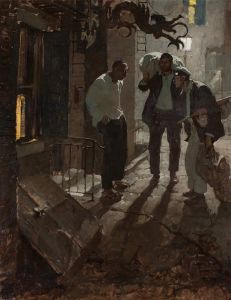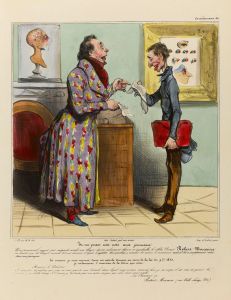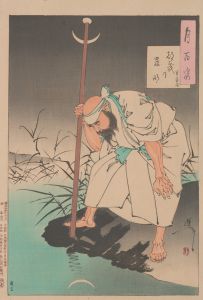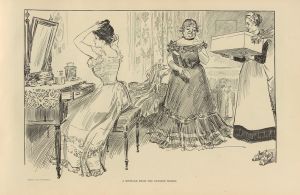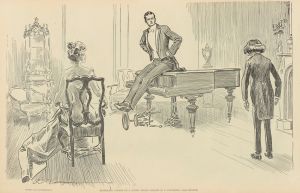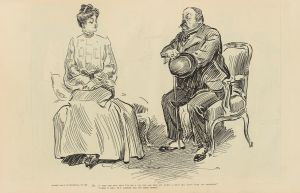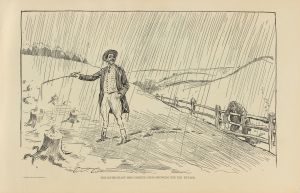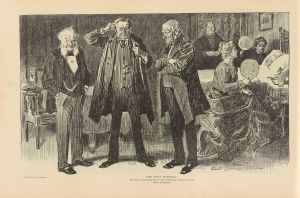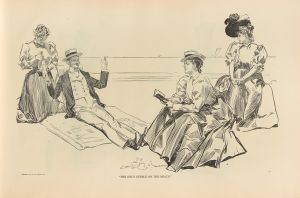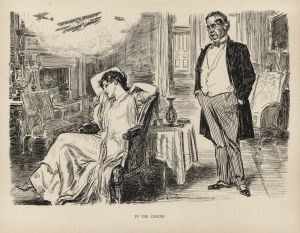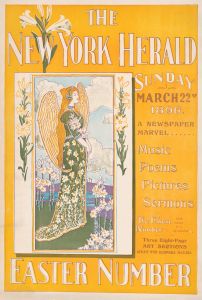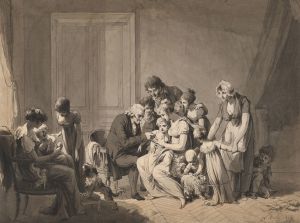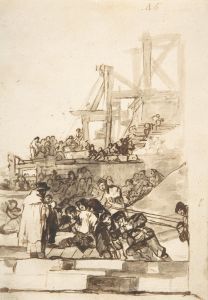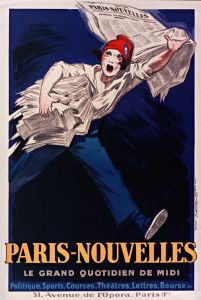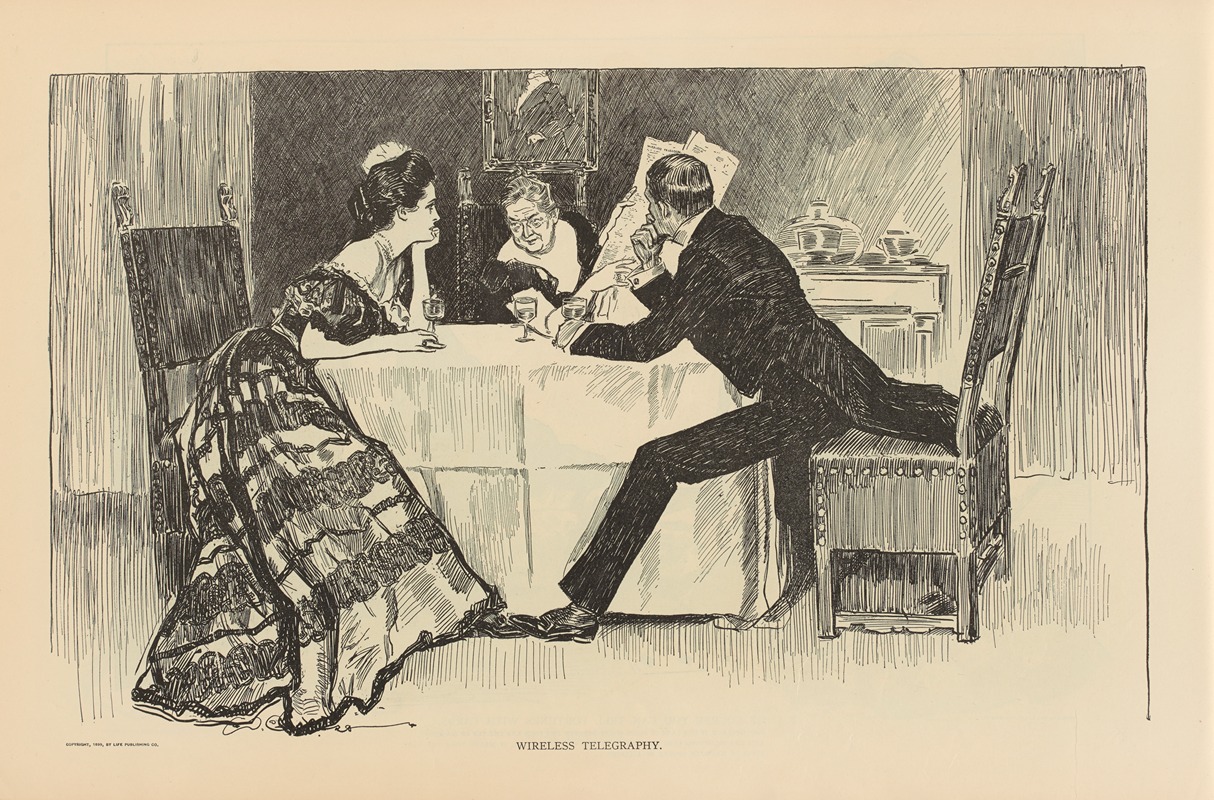
Wireless telegraphy
A hand-painted replica of Charles Dana Gibson’s masterpiece Wireless telegraphy, meticulously crafted by professional artists to capture the true essence of the original. Each piece is created with museum-quality canvas and rare mineral pigments, carefully painted by experienced artists with delicate brushstrokes and rich, layered colors to perfectly recreate the texture of the original artwork. Unlike machine-printed reproductions, this hand-painted version brings the painting to life, infused with the artist’s emotions and skill in every stroke. Whether for personal collection or home decoration, it instantly elevates the artistic atmosphere of any space.
"Wireless Telegraphy" is an illustration by the renowned American artist Charles Dana Gibson, who is best known for creating the iconic "Gibson Girl" images that epitomized the idealized American woman of the late 19th and early 20th centuries. Gibson's work was widely published in magazines such as Life, Scribner's, and Harper's, and his illustrations played a significant role in shaping the visual culture of his time.
The illustration "Wireless Telegraphy" was created during a period when wireless communication was an emerging technology that captured the public's imagination. The early 20th century was a time of rapid technological advancement, and wireless telegraphy, in particular, was revolutionizing communication by allowing messages to be sent over long distances without the need for physical wires. This technology laid the groundwork for modern radio and telecommunications.
Gibson's illustration reflects the fascination and excitement surrounding this new technology. While specific details about the content of "Wireless Telegraphy" are not extensively documented, Gibson's work often combined elements of humor, social commentary, and a keen observation of contemporary life. It is likely that the illustration captures the novelty and wonder associated with wireless communication during this era.
Charles Dana Gibson's artistic style is characterized by his use of pen and ink, with a focus on fine lines and detailed shading. His illustrations often depicted scenes of upper-class society, capturing the fashion, manners, and social dynamics of the time. Gibson had a talent for capturing expressions and body language, which added depth and personality to his characters.
The impact of Gibson's work, including "Wireless Telegraphy," extends beyond its immediate visual appeal. His illustrations contributed to the popularization of new technologies by making them accessible and relatable to the general public. By incorporating contemporary themes into his art, Gibson helped bridge the gap between technological advancements and everyday life.
Gibson's influence on American culture was significant, and his work remains an important part of the history of illustration. His ability to capture the spirit of his time, combined with his technical skill, ensured that his illustrations were not only popular during his lifetime but also enduring in their appeal.
While specific information about the illustration "Wireless Telegraphy" is limited, it stands as a testament to Charles Dana Gibson's ability to engage with contemporary themes and capture the imagination of his audience. His work continues to be studied and appreciated for its artistic merit and its role in documenting the cultural and technological shifts of the early 20th century.





